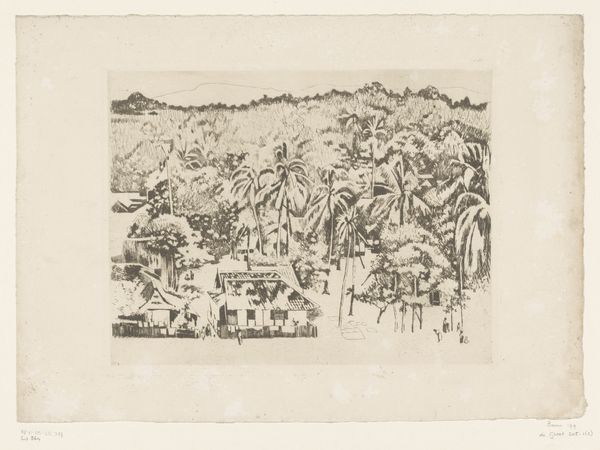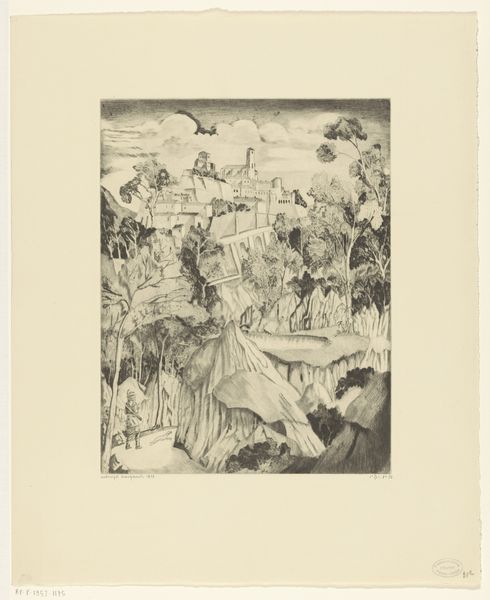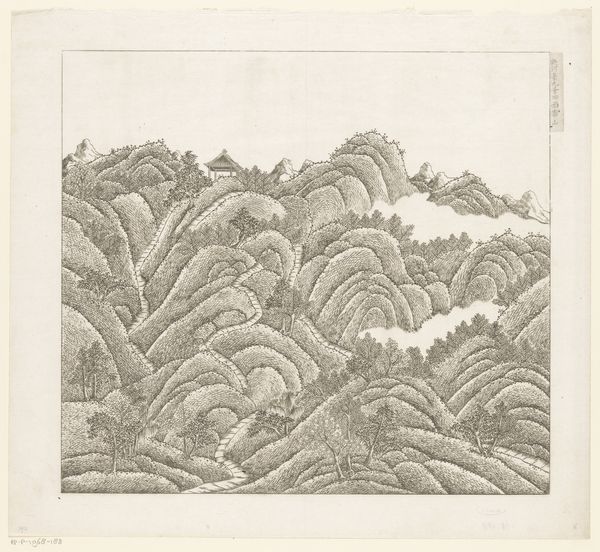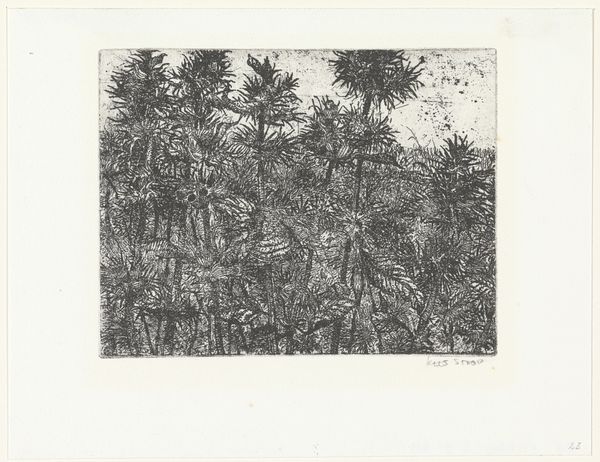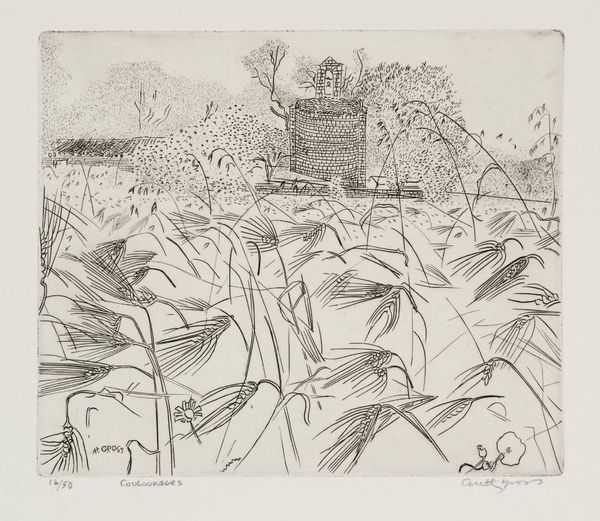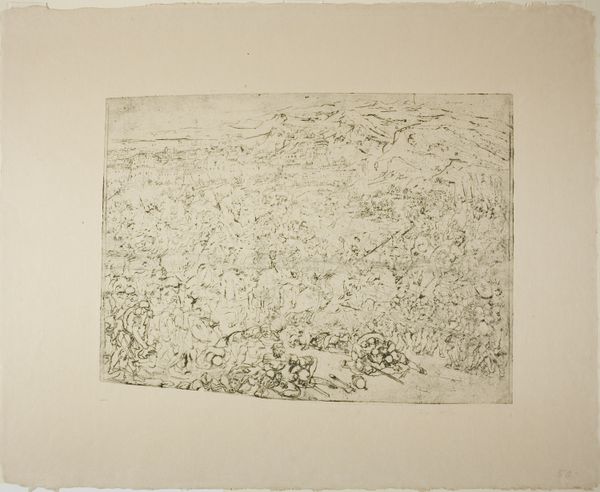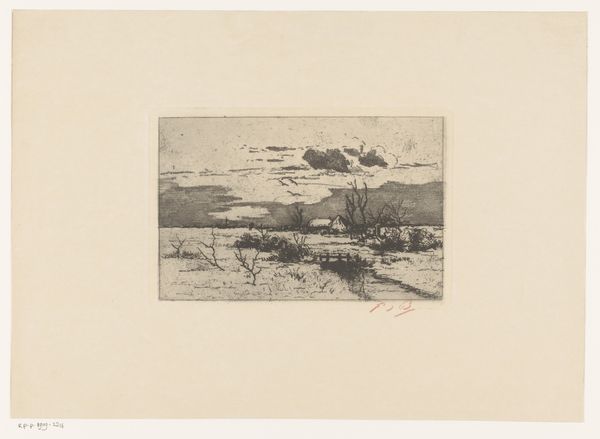
print, etching
#
dutch-golden-age
# print
#
etching
#
old engraving style
#
landscape
Dimensions: height 279 mm, width 322 mm
Copyright: Rijks Museum: Open Domain
Curator: Willem Witsen's etching, "Gezicht op een landschap met klapperbomen in Buitenzorg," dating from around 1921, presents us with a detailed depiction of a landscape filled with palm trees. Editor: It has this very dreamlike quality... slightly melancholic with the somber coloring against the rather idyllic view. Curator: Indeed. Let's delve into the structure. The composition showcases a masterful control of line and tone. Witsen employs cross-hatching to build up depth and volume, effectively rendering the lush vegetation and the distant mountain. Semiotically, the dense network of lines speaks to the complex layers within this scene. Editor: But the context is everything, isn’t it? This wasn't just an "idyllic" scene, considering the location - Buitenzorg, now Bogor, in Indonesia, which was then part of the Dutch East Indies. Witsen's portrayal almost romanticizes the colonial landscape, overlooking the inherent power dynamics and the indigenous experiences suppressed within. Curator: That perspective brings crucial context. Still, let’s appreciate the way the artist's deployment of chiaroscuro enhances the textural differences between the foliage and sky. Consider the horizon— the faint lines depicting atmospheric perspective. This contrasts the sharp rendering of the foreground’s palm fronds. Editor: Yet we have to understand this through a colonial lens. How complicit was Witsen in propagating the vision of a passive, receptive colony awaiting its Western overlords? To overlook it would deny the reality for people dispossessed of their homes through Dutch occupation. Curator: Certainly, it provides nuance beyond aesthetics. The landscape motif, prevalent within Dutch art, is charged when relocated to colonial soil. One begins to unpack ideologies through the technical proficiencies evident here. Editor: Exactly! I think the key lies in us interrogating what is absent. This view elides history by privileging "the beauty" rather than a recognition of the structures sustaining it. So much of visual artistry works to suppress inconvenient details that make colonial pictures complete. Curator: On balance, while recognizing colonialism's grave impact, it doesn't negate studying the art's inherent properties, particularly in the ways its formal elements communicate or subtly suggest ideology. Editor: Precisely, recognizing it fully enriches and complexifies. I believe grappling with that relationship enhances understanding greatly.
Comments
No comments
Be the first to comment and join the conversation on the ultimate creative platform.

